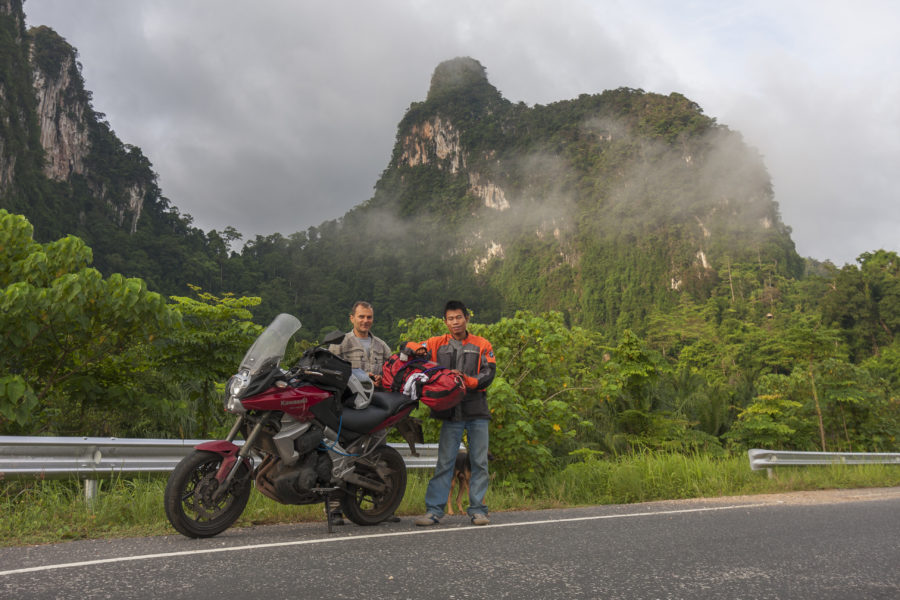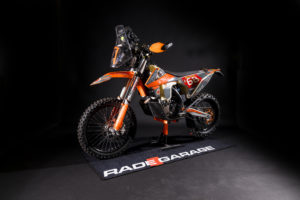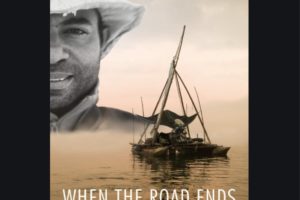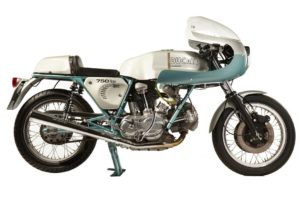This guest post was kindly contributed by @igorshen. A photo from Igor’s travels was featured on the inside coverof the ADVrider Magazine.
In terms of motorcycling, I am a late bloomer. Apart from scooter rentals while backpacking through Asia and Africa, I had never sat on a motorcycle till I was forty. I guess it was my version of a middle-age crisis. Some people buy a red Corvette, I got a red KLR.
In the previous life I enjoyed adventure activities, from backpacking through Africa to rock climbing, skydiving and paragliding. “Adventure riding” seemed like the type of riding that would suit me.
When the 2008 financial crisis revealed the depth of corruption and lawlessness in the “first world,” I decided to try a “third world” country. I ended up in Thailand, got a Kawasaki Versys (the only 650 cc motorcycle that was manufactured in Thailand at the time) and started exploring Southeast Asia on two wheels.
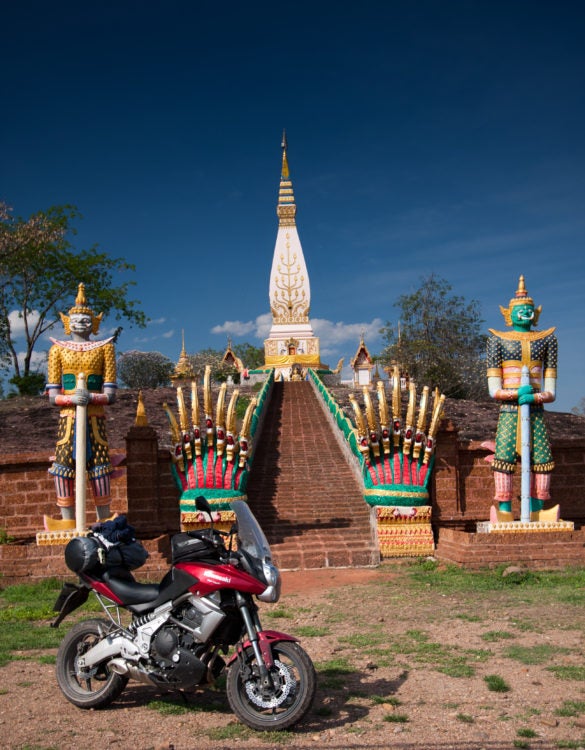
My red Kawasaki Versys at a Lao-style temple on Thai side of Mekong river.
Up and Down the Mekong River
The Mekong is one of the world’s great rivers, providing food, water and transportation to millions of people in SE Asia. Life in this part of the world is slow-paced. Ethnically, Isaan people on the Thai side are closely related to the Lao people. Customs, food and the language are nearly identical. My favorite kind of Thai food comes from this part of the country, distinctly spicy and sour.
Buddhism seems to be the secret sauce that keeps these people content, despite what could, in the West, be described as poverty. A warm climate and abundant food enable Isaan people to get by on very little money. Many foreigners fall in love with this simple, laid-back way of life and move to live in Isaan.
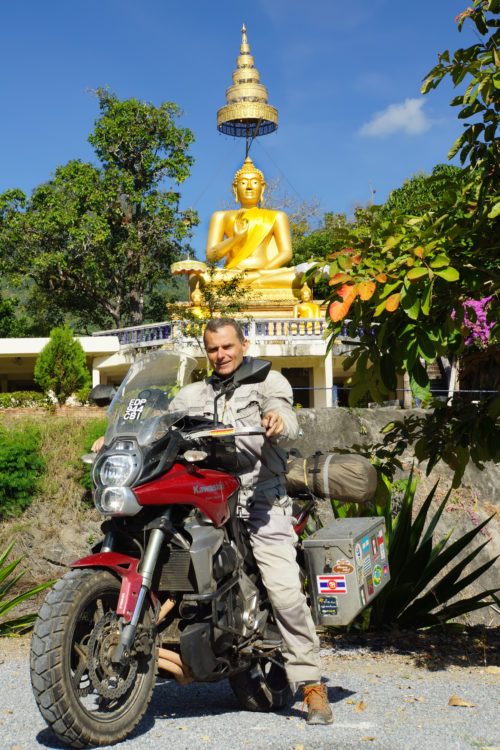
Buddhism seems to be the secret sauce that keeps Isaan people content.
Roads that run along the river on the Thai side, connecting villages and temples to bigger towns, are generally in excellent condition, with almost no traffic. Restaurants and “resorts” (Thai motels) are plentiful and cheap, and many of them are nicely situated by the river.

On a ride with a fellow Thai rider in southern Thailand.

Northern Thailand is blessed with lush forests and gushing waterfalls.
While the Thai side of the Mekong River is flat, Laos’s side is mountainous and very lush in parts. Mountains come down to the Mekong. The Laos side also has more dirt roads that reward riders with that “being remote” feeling.
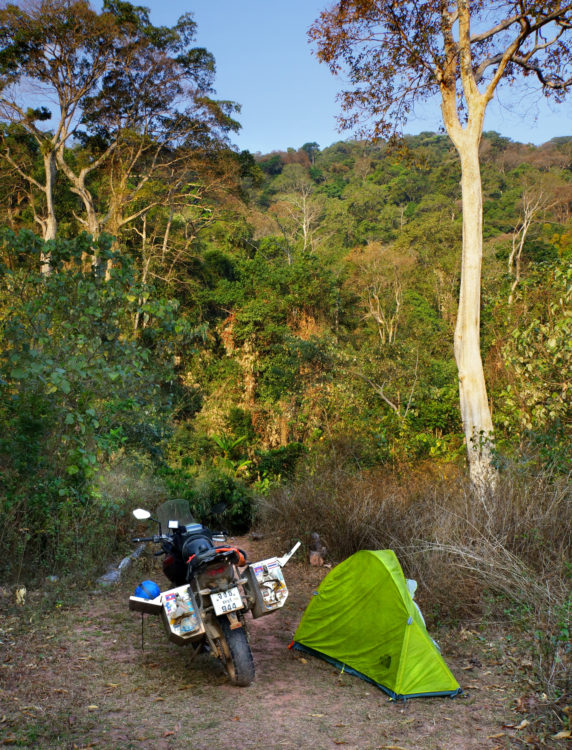
A jungle camp near the border between Laos and Vietnam, where a herd of wild elephants passed by my tent.
Heading further east, towards the border with Vietnam, one passes through a thick jungle, still inhabited by wild elephants. Once I camped in a jungle and was woken up in the middle of the night by the sound of trees being crushed. I realized that a herd of wild elephants was passing by, but there wasn’t much I could do about it other than pray they wouldn’t march over my tent.
东部老挝在越南边境,the famous Ho-Chih Minh trail went. Parts of it are still preserved and can be ridden but a light dirt bike is more suitable for it than the Versys. Because of this trail, Laos has been the most bombed country in the world (up to the time of the Vietnam war, anyway) even though, officially, Laos was never involved in the war. Traveling through this area, one can still see war relics scattered around.

Limestone hills near Vang Vieng, a backpackers mecca, in Laos.
在老挝北部,一个联合国教科文组织的城市,皇太后Phrabang我s probably the most famous destination. The town is full of temples and restored French colonial houses turned into classy boutique hotels. The morning ritual of giving alms to the monks has become a cheap tourist attraction and overzealous tourists armed with cameras outnumber monks these days.
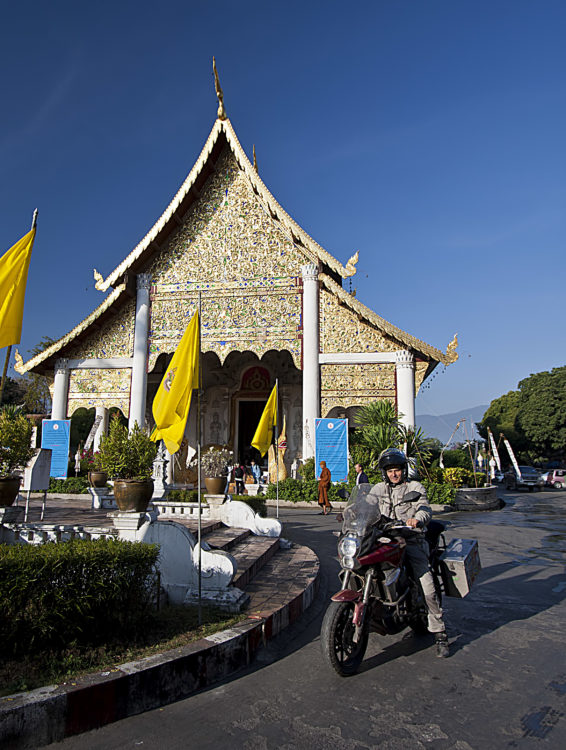
One of many temples in Chiang Mai, Thailand.
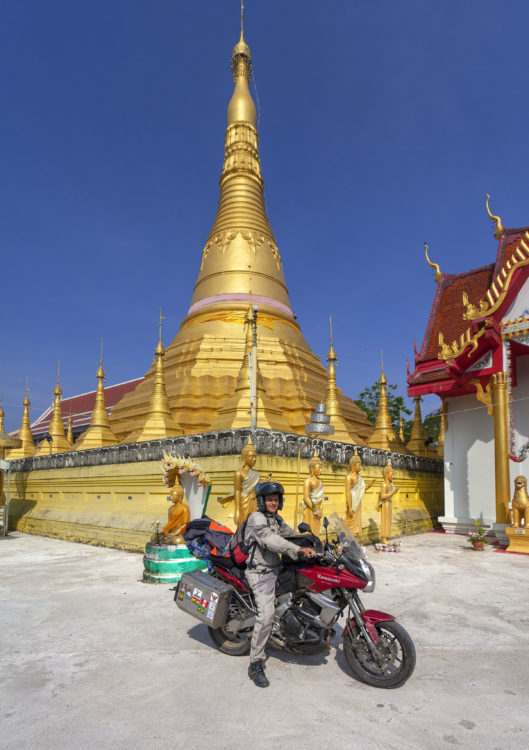
A temple in Isaan, Thailand.
Golden Triangle
Generally, the further away from Bangkok and major roads I get, the better the riding, the scenery and the people. Northern Thailand, being far away from the capital, as mountainous as this country gets and squeezed in between Laos and Myanmar, is hands-down the top biking destination in Thailand. Foreign and Thai riders come to this part of Thailand for the best riding. There are numerous bike rental shops in Chiang Mai, the super touristy center of the north. The Golden Triangle (the point where Myanmar, Laos and Thailand meet) is a popular riding destination out of Chiang Mai. Another famous ride is the loop from Chiang Mai to Mae Hong Son via Pai and back to Chiang Mai from the south.
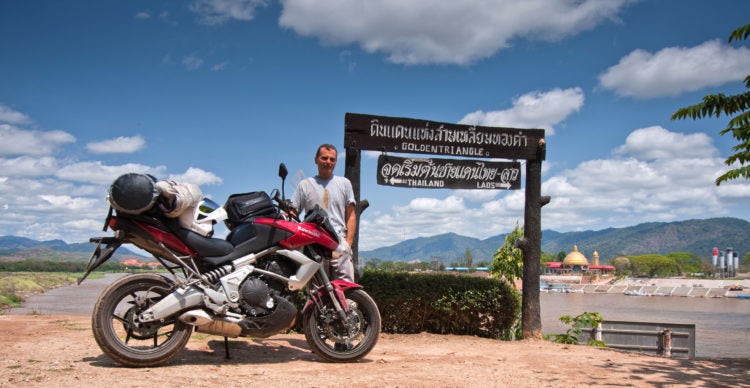
Golden Triangle, where Myanmar, Thailand and Laos meet.
I personally prefer roads through the provinces of Nan (bordering Laos) and Mae Sot (bordering Myanmar). These sparsely-inhabited areas are a lot less popular with both domestic and foreign visitors. In addition, the nature is more pristine and there are still patches of virgin jungle, something that is hard to find in Thailand nowadays.
Malaysia – A Melting Pot of Cultures and Religions
Not as touristy and much more low key than Thailand, Malaysia does have a lot to offer to visitors, from untouched jungles, to tropical islands with pristine white-sand beaches, to coffee-growing highlands, to an amazing mixture of Chinese, Indian and Malay cultures and cuisines.
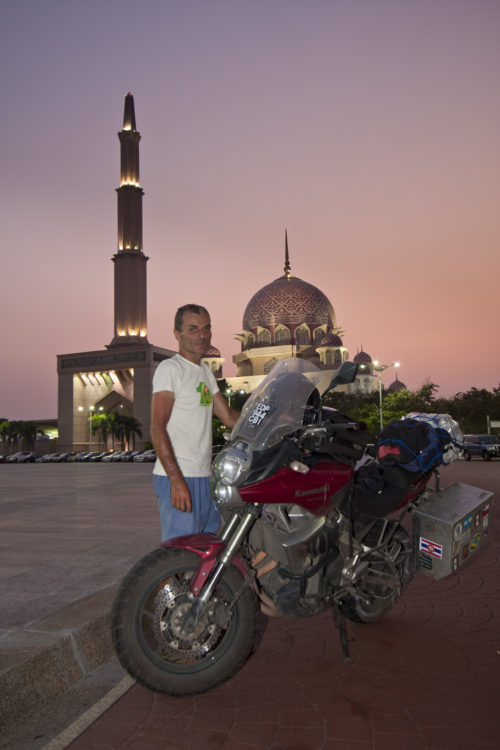
16) Putra Jaya is the new, purpose-built, capital of Malaysia with interesting architecture combining modern and traditional styles.
In terms of riding, jungle-covered mountains NE of Kuala Lumpur are my favorite. Taman Negara national park is a great place to go deep into a well-preserved jungle.
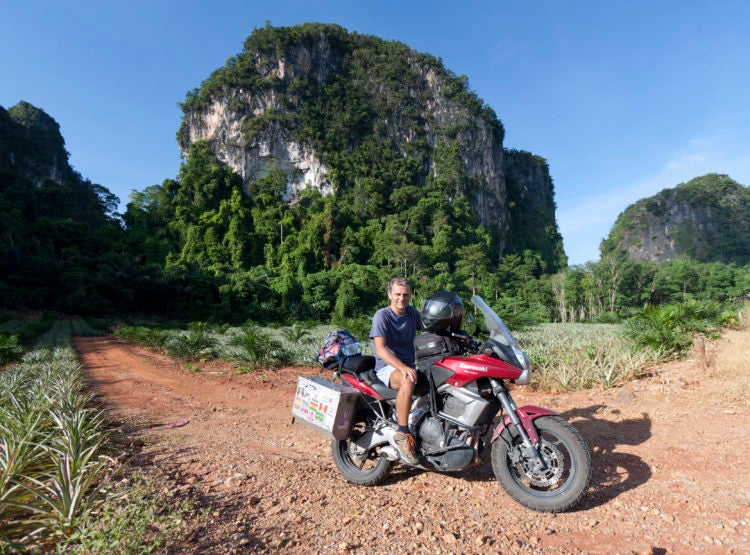
17) Another typical feature of SE Asia – limestone karsts.
Malacca, a UNESCO heritage city, is where Chinese and Indian merchants would meet to trade goods well before the colonial era. Even today, Malacca Strait is one of the busiest in the world, if notthebusiest (it was at one point).
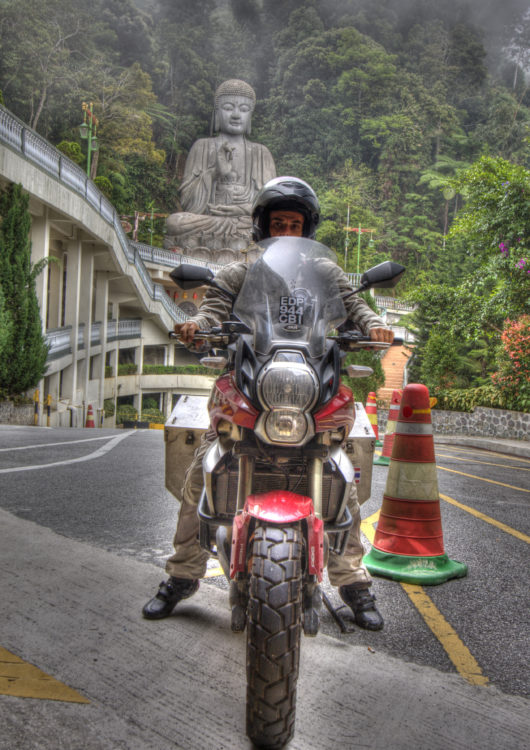
马来人的高地ia.
Unlike Thailand, the best islands and beaches are on the east side, in the Pacific. My favorite island is Parenthinan (actually two small islands next to each other). Just as beautiful as any of the Thai islands, but without night clubs. Ferry operators will happily store your motorcycle at the pier on the mainland while you visit the islands.
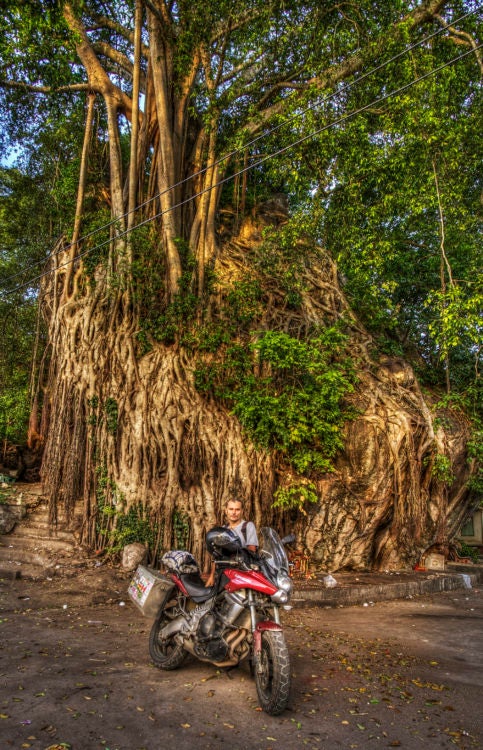
Banyan trees are very common in SE Asia.
Tomb Raiding in Cambodia
Cambodia has its share of beaches, highlands and temples, but the main draw is the Angkor temple complex where the movie Tomb Raiders was filmed. This was the center of the Khmer Kingdom that ruled a big part of SE Asia. There are Khmer temples to be found in adjacent parts of Laos and Thailand, but the true grandeur is best seen just outside the town of Siem Reap.
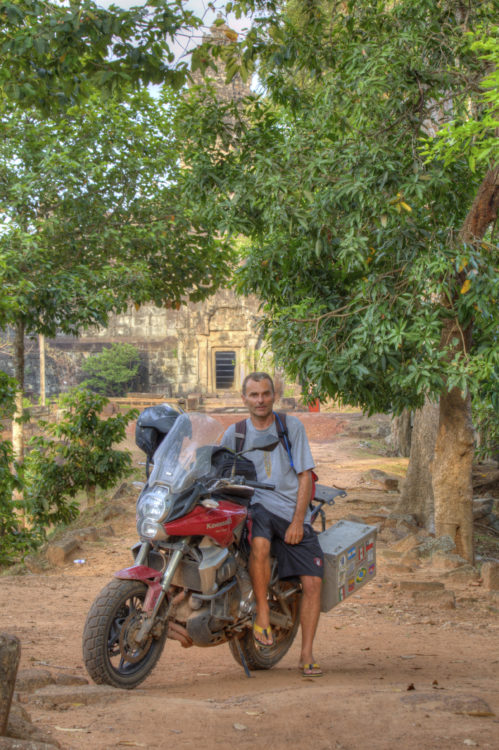
At one of the temples in Cambodia.
A ride from Thailand following the coast and crossing outside Trat is the most picturesque. On the Cambodian side, the road continues over the Cardamom highlands, also a very remote and scenic area.
From there, one can head south to the most famous beach town of Skhanoukville, or north to Phnom Phenh and Siem Reap.
Infrastructure and facilities are much more limited than in neighboring Thailand. Also, driving in Cambodia is quite dangerous, so be extra careful. Defensive riding is the best way of avoiding accidents.
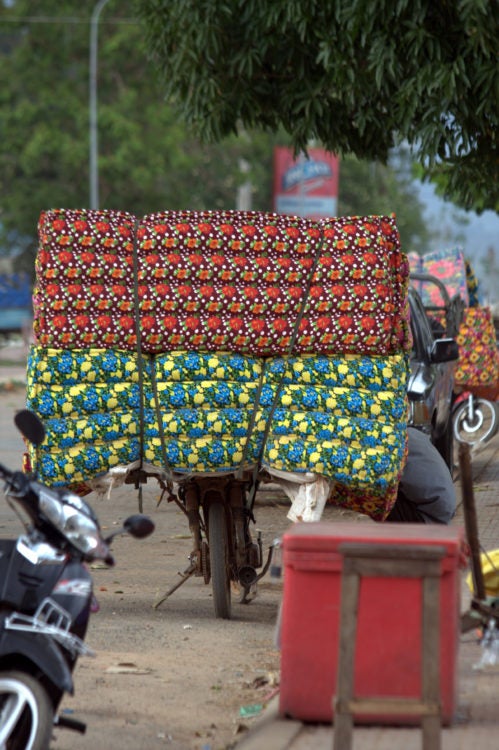
1) Scooters are used to transport all kinds of things in Vietnam – in this case, mattresses.
Vietnam – the Scooter Paradise
Getting a foreign-registered vehicle into Vietnam is troublesome and expensive. Typically, travelers rent or buy local motorcycles. Most roads going through mountains and remote areas are narrow and exceedingly curvy. Horsepower and big engines are of no use there. On small, twisty roads, there were very few vehicles faster than my rented 100 cc scooter.
After a few days of exploring Hanoi, I rented a scooter and set off on a two-week tour of northern Vietnam. Getting out of the city was challenging, but after two hours of fighting the traffic, I was riding through rice fields and limestone mountains towards Sapa – a hill city loved by both Vietnamese and foreign tourists.
I tried to follow roads closest to the border (with China for most part) as those are the most remote areas. At one point, I came across an illegal border crossing, which despite mine-field warning signs, was obviously heavily used.
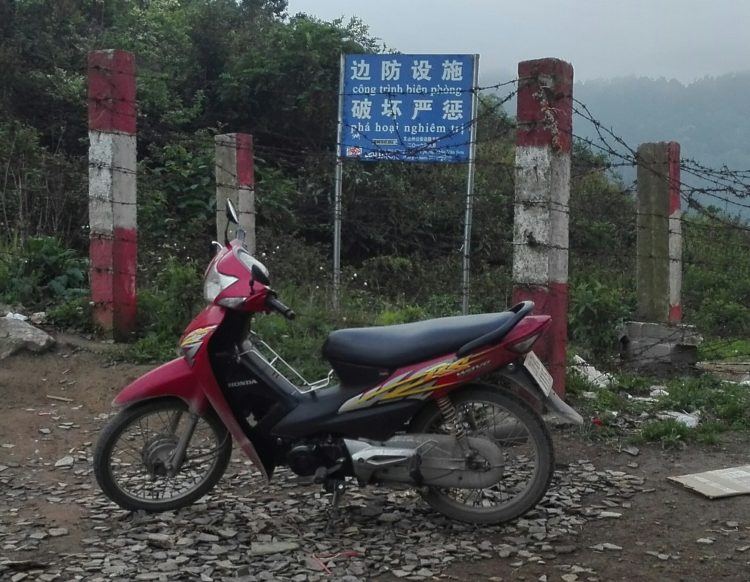
3) Warnings for the minefield at an illegal border crossing between Vietnam and China.
Nearby are two important sites for any history buff. First is the cave where Ho Chi Minh spent time planning the expulsion of the French colonizers. The second site is the town of Dien Bien Phu, where the French were decisively defeated and North Vietnam was born.

Arc de Triomphe in Vientiane, celebrating the riddance of the French.
While climbing one steep hill, my engine seized. I had not checked the oil level at the time of rental and I guess it was very low. I barely made it back to the city in the late afternoon. I found a mechanic who managed to re-build the engine in less than two hours (most time is spent on taking the cylinder to another shop to have it honed). The best part is the price – about $20. I don’t want to even think what this kind of problem would cost in a “first world country.”
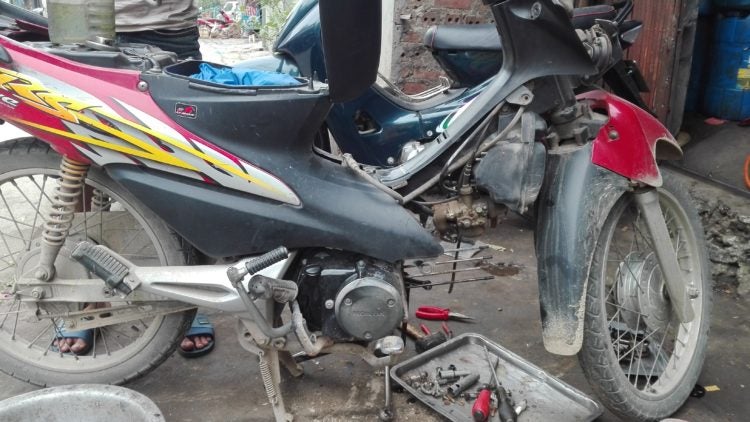
Waiting for the engine to re-built in a few hours and $22 in Vietnam.
Conclusion
With all the upsides and virtually no downsides, I am surprised SE Asia is not a more popular riding destination. So when the borders open, hop on a plane, get a bike of your choice and just roam around. You will have a great time.


